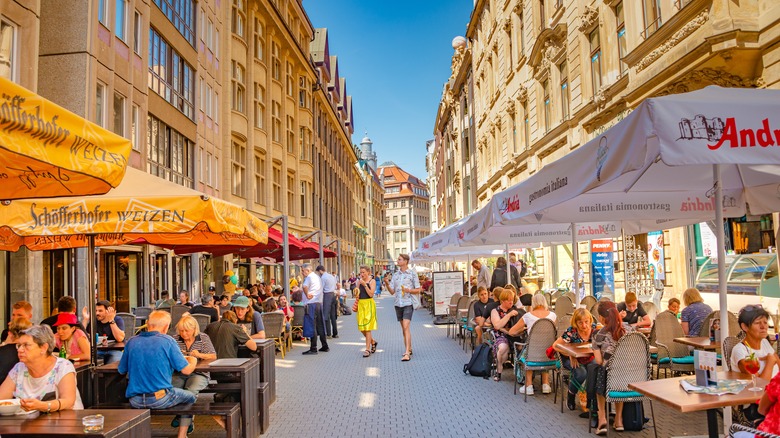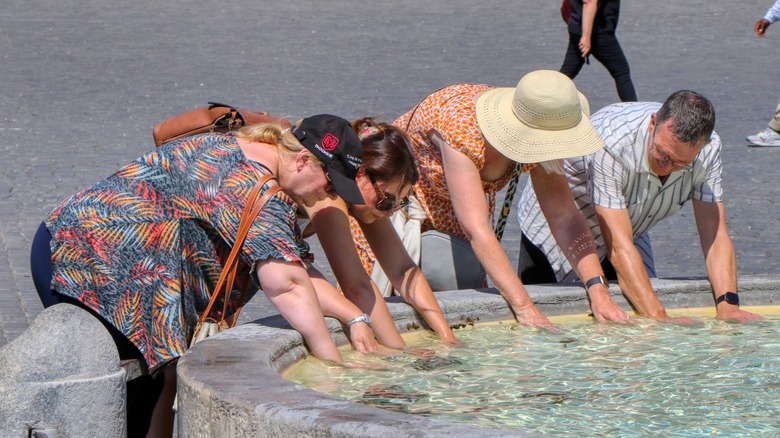The Common Luxury That Tourists Visiting Europe Should Not Expect In Public Areas
Would you consider air conditioning a luxury? The answer is probably no, not really. According to a 2022 report by the Energy Information Administration, 90% of homes in the United States use air conditioning. AC is a mundane reality in American homes, malls, and restaurants — blasting so cold it feels like you're in a meat locker. However, when American tourists visit Europe — particularly during the warmer months — they might be disappointed to find that what they take for granted back home is nearly absent on the other side of the world. Those planning to travel to Europe should prepare: Air conditioning is a rare, uncommon luxury.
The percentage of European homes with AC is only around 20%. Air conditioning is not viewed as essential the way it is in North America. This is partially because of the relatively mild climate that many European regions have traditionally experienced. Although heatwaves have become more common — and alarming — in recent years, much of Europe still has stable temperatures, except for July and August. Europeans prefer natural ventilation, relying on fans or cracking open a window to keep spaces cool with natural airflow.
Many European buildings have built-in "climate control" — think Italian countryside villas with thick stone walls or white Greek homes with balconies and external shutters. Moreover, half of European residential buildings were built pre-1970, before the first thermal regulations were introduced. This is why so few homes were built with AC, and so few homeowners today want to go through the arduous, bureaucratic, and time-consuming process of retrofitting a historic building with a modern AC unit. The logic here is cool (pun intended): Why bother installing expensive, energy-draining, environmentally-harmful AC systems that'll be used only two months of the year?
European approach to AC and staying cool without it
Besides these cultural, environmental, architectural, and economic reasons, the government is now also getting involved. The European Union is limiting the use of AC in an effort to reduce the demand for natural gas by 15%, for environmental and political reasons. Spain, Italy, and Greece, particularly, are placing temperature limits on AC in public spaces, like train stations, department stores, theaters, and airports. If you're staying in a hotel, you should be aware of this heat and AC rule before visiting. Although you can control the temperature in the privacy of your own room, accommodations with AC are more expensive, and public areas of the hotel may not have it on. European upscale restaurants, shopping malls, and newer office buildings usually have AC installed — it just might not be blasting the way it is in America.
For tourists who are unaccustomed to surviving without AC, a few simple strategies can make a big difference. Planning activities early in the morning or later in the evening, when temperatures are cooler, can help you avoid the midday heat that'll make you sweat like a hot yoga class. This is why locals take siestas, eat after 10 p.m., and generally shut down in August! Dressing in light, breathable, natural fabrics (linen and cotton), using a fan, drinking water, and staying in the shade will also help you feel more comfortable. Or, don't visit Europe in the summer altogether and avoid both the heat and the crowds. At the end of the day, the lack of AC is part of the European experience. Embracing the local approach to keeping cool, and cooling down your expectations will allow you to enjoy your European adventure — sweat and all!

